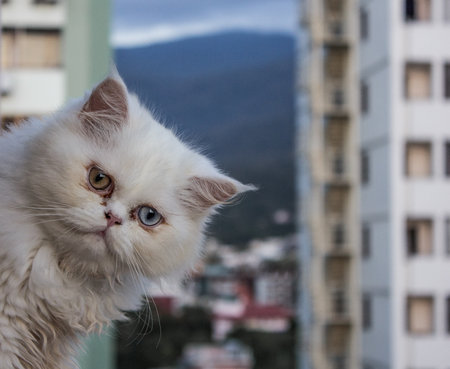Introduction: Navigating Urban Pet Ownership in the UK
Life in the UK’s bustling cities can be as exhilarating as it is challenging, especially when you share your space with a furry, feathered, or even scaly companion. Urban pet ownership offers city dwellers the comfort of companionship and a touch of nature amid concrete landscapes. However, choosing the right pet to suit a metropolitan lifestyle takes careful thought. Factors such as limited living space, proximity to neighbours, access to green areas, and the demands of busy work schedules all play a part in determining which breeds—or even species—will thrive in an urban environment. Whether you dream of curling up on the sofa with a purring cat, strolling through leafy parks with a loyal dog, or observing the quirky antics of an exotic reptile, understanding the unique joys and challenges of keeping pets in UK cities is essential. In this guide, we’ll explore how to select a pet that not only fits into your flat but also complements your daily routine and brings joy to your urban life.
2. Top Cat Breeds for City Living
If you’re living in a bustling UK city, choosing the right cat breed is essential for both your pet’s happiness and your own peace of mind. Not every feline is suited to flat life or compact homes, but some breeds truly thrive in smaller, busier environments. Here’s a look at several top contenders beloved by urban dwellers across Britain:
British Shorthair: The Quintessential Urban Companion
The British Shorthair is perhaps the most iconic cat for city living. Renowned for their calm temperament and low-maintenance coat, these felines are well-suited to indoor life, handling solitude during your work hours with grace. Their plush blue-grey fur and round faces have made them favourites from London flats to Manchester townhouses.
Bengal: For Playful Urbanites
If you crave a bit more excitement, the Bengal offers a lively option. These striking, leopard-spotted cats are intelligent and highly interactive—great if you’re keen on play sessions after a long day. While they do require stimulation (think climbing trees and puzzle toys), Bengals can adapt to flat life so long as their mental and physical needs are met.
Other Notable Breeds
| Breed | Key Traits | Why It’s Great for Flats |
|---|---|---|
| Scottish Fold | Affectionate, quiet, adaptable | Tolerates being indoors; gentle nature suits smaller spaces. |
| Sphynx | Social, energetic, hairless | No shedding; loves human company; ideal for allergy sufferers. |
| Russian Blue | Reserved, independent, loyal | Happy alone during the day; low grooming needs. |
| Ragdoll | Docile, affectionate, relaxed | Loves lounging; content with limited space. |
Tips for City Cat Owners in the UK
Regardless of breed, ensure your feline has access to scratching posts, window perches, and interactive toys. Consider securing windows and balconies for safety. With the right setup and breed choice, even the cosiest London flat can become a perfect feline playground.

3. Dog Breeds That Thrive in Flats and Townhouses
When it comes to city living in the UK, not every dog breed is cut out for the hustle and bustle of urban life, especially if you’re making your home in a cosy flat or a townhouse. Luckily, there are both small companions and larger, surprisingly adaptable breeds that fit perfectly into the rhythm of British city life, coping well with everything from drizzly mornings to packed trains and lively parks.
Small Breeds: Compact Companions for Cosy Spaces
Small breeds like the Cavalier King Charles Spaniel and French Bulldog are perennial favourites among urban dwellers. These dogs are typically calm indoors, friendly with neighbours, and don’t need vast open spaces to stay happy. Their manageable size means they’re easy to carry on public transport – a must for navigating London’s Tube or hopping on the bus in Manchester. Plus, their sociable natures make them a hit during those impromptu chats at the local park.
Larger Breeds: Gentle Giants with City Smarts
Don’t rule out bigger breeds just because you live in the city! Greyhounds, for example, are famously laid-back and love lounging about as much as they enjoy a good sprint at your local green space. Similarly, Labrador Retrievers can adapt well to city life provided they get regular walks and plenty of playtime. Both breeds tend to handle typical British weather with ease – a quick shake off after a rainy stroll, and they’re ready for a nap on your sofa.
Manners Matter: Navigating Public Transport and Park Etiquette
Living in the UK means sharing space with lots of other people (and pets), so choosing a breed known for its good manners is essential. Breeds like the Pug or Cocker Spaniel are often praised for their patience when waiting at train platforms or mingling with other dogs during busy park hours. Training your dog to be comfortable with crowds, unpredictable weather, and new environments will help ensure you both get the most out of urban adventures.
Top Tip from an Urban Dog Owner
After years of morning walks along the Thames Path and countless rainy afternoons spent drying muddy paws by the radiator, I’ve learned that choosing a dog suited to city life makes all the difference. Whether it’s a snuggly Bichon Frise or a dignified Whippet, finding a breed that matches your pace of life (and your tolerance for soggy walks) is key to harmonious living in Britain’s vibrant cities.
4. Unconventional Pets: Birds, Reptiles, and Small Mammals
If you’re craving something a little different than the usual moggy or pooch, urban UK living offers an ideal environment for unconventional pets like parrots, geckos, and fancy rats. These species not only fit perfectly in compact flats but also bring unique companionship to city dwellers who value personality over tradition.
Parrots: Colourful Companions for the Chatty Urbanite
Parrots such as budgies and cockatiels are fantastic for those with limited space but unlimited affection. Their vibrant plumage and cheeky personalities can brighten up even the greyest London afternoon. However, they do require daily mental stimulation and a calm environment, so make sure your flat isn’t too noisy from street traffic or neighbours.
Top Tips for Parrot Care in the UK
- Provide a spacious cage with plenty of toys and perches.
- Ensure exposure to natural daylight or use avian lamps during gloomy British winters.
- Keep them mentally active with puzzle feeders and regular social interaction.
Geckos: Low-Maintenance Lizard Lovelies
Leopard geckos have become especially popular among urbanites thanks to their minimal space requirements and quirky antics. These reptiles don’t need elaborate setups, but stable temperatures are essential—something easily managed in a modern UK flat.
| Lizard Type | Ideal Tank Size | Temperature Range (°C) |
|---|---|---|
| Leopard Gecko | 45-60cm tank | 24-30°C |
| Crested Gecko | 45-60cm tank (taller is better) | 22-26°C |
Lizard Care Essentials for City Dwellers
- Invest in a reliable heat mat or ceramic heater—never rely solely on UK central heating!
- Avoid placing tanks near draughty windows or radiators.
- Mist regularly if keeping species that need higher humidity.
Fancy Rats: Intelligent, Affectionate & Apartment-Friendly
The humble fancy rat is perhaps the UK’s best-kept pet secret. They’re clever, affectionate, and more than happy living in a multi-storey cage tucked into your lounge. Rats bond closely with their humans and thrive on gentle handling—making them perfect for busy professionals seeking low-maintenance love.
| Small Mammal | Minimum Cage Size | Daily Enrichment Needed? |
|---|---|---|
| Fancy Rat | 80 x 50 x 50cm (for two) | Yes—tunnels, hammocks, chew toys |
| Dwarf Hamster | 60 x 40 x 40cm | Tunnels, wheels, sand baths |
Caring for Small Mammals in Urban Flats
- Avoid cedar or pine bedding—opt for paper-based or aspen alternatives.
- Clean cages weekly to prevent odours—especially important when sharing walls with neighbours!
- Always house rats in pairs or groups; they’re highly social creatures.
If you’re looking for a pet that fits seamlessly into urban life, don’t overlook these less conventional options. With proper care tailored to the UK’s unique climate and housing styles, birds, reptiles, and small mammals can be just as rewarding—and possibly even more fascinating—than their canine or feline counterparts.
5. Practical Tips: Making Urban Living Work for You and Your Pets
City life with a pet in the UK is full of charm and unique challenges, but with some savvy planning, you can create a comfortable environment for both you and your furry (or scaly) companions. Here are some UK-specific tips to ensure your urban dwelling remains a pet-friendly haven.
Securing Pet-Friendly Flats
The hunt for a rental that welcomes pets can be daunting in cities like London or Manchester. Look for listings marked as “pet-friendly” on platforms such as Zoopla or Rightmove, and don’t hesitate to ask letting agents directly about their policies. Consider offering a “pet CV” – yes, it’s a thing! Include references from previous landlords, vaccination records, and even a cute photo or two. This personal touch often reassures landlords and shows you’re a responsible owner.
Accessing Green Spaces
Urban areas across the UK boast many parks and commons – from Hyde Park in London to Glasgow Green. Regular walks or play sessions are crucial for your pet’s wellbeing, so map out local green spaces using council websites or apps like DogBuddy. Some boroughs even have dedicated dog exercise zones or enclosed areas for smaller pets and exotics to safely enjoy fresh air.
Sorting Out Pet Insurance
Vet bills can quickly stack up, especially in city clinics where prices tend to be higher. Compare policies through UK-specific providers like Petplan or Bought By Many; look for coverages tailored to common urban risks such as theft or road accidents. Don’t forget exotic insurance if your companion is less mainstream—specialist brokers cater for everything from parrots to ferrets.
Finding Local Resources
Having trustworthy professionals nearby makes urban pet life much smoother. Register with a local vet as soon as you move in—NHS directories or the Royal College of Veterinary Surgeons site will help you locate reputable practices. For supplies, support your neighbourhood pet shops; they often stock breed-appropriate food and toys hard to find in supermarkets. And don’t overlook community groups! Many UK towns have online forums or Facebook groups dedicated to pet owners sharing advice, arranging meetups, or swapping pet-sitting duties.
Final Thoughts
No matter the breed—be it an adventurous Border Terrier, an indoor British Shorthair cat, or an unusual gecko—UK city living can be deeply rewarding with the right preparation. Embrace local resources and build connections with other pet lovers; together, youll create a thriving urban habitat for all creatures great and small.
6. Conclusion: Choosing the Right Companion for Modern City Lifestyles
Bringing a new pet into your city home is both an exciting and thoughtful decision, especially in the bustling urban settings of the UK. From compact flats in London to terraced houses in Manchester, every living arrangement comes with its unique set of challenges and opportunities when it comes to pet ownership. The key to a harmonious relationship with your furry (or even scaly or feathery) companion lies in honestly assessing your lifestyle, daily commitments, and available space. If you have limited time due to a busy work schedule or frequent commutes on the tube, low-maintenance pets like British Shorthair cats or even small rodents might be ideal. For those who love spending weekends exploring city parks or canal paths, a sociable and adaptable dog breed such as the Cavalier King Charles Spaniel could be perfect. Urban dwellers with an eye for the unusual might even consider reptiles or birds that thrive in smaller environments and don’t mind indoor living. Remember, choosing a pet isn’t just about what you want—it’s about what you can realistically provide for their wellbeing. Take time to research local breeders, adoption centres, and even rescue organisations that understand the unique needs of city animals. Don’t hesitate to chat with fellow pet owners at your local café or green space; personal experiences are often the best guides! Ultimately, whether you opt for a purring lap-cat, a playful pup, or something delightfully unconventional, city living in the UK can be deeply enriched by sharing your home with the right companion. Embrace this journey with care and curiosity—your future best friend is waiting somewhere nearby.


